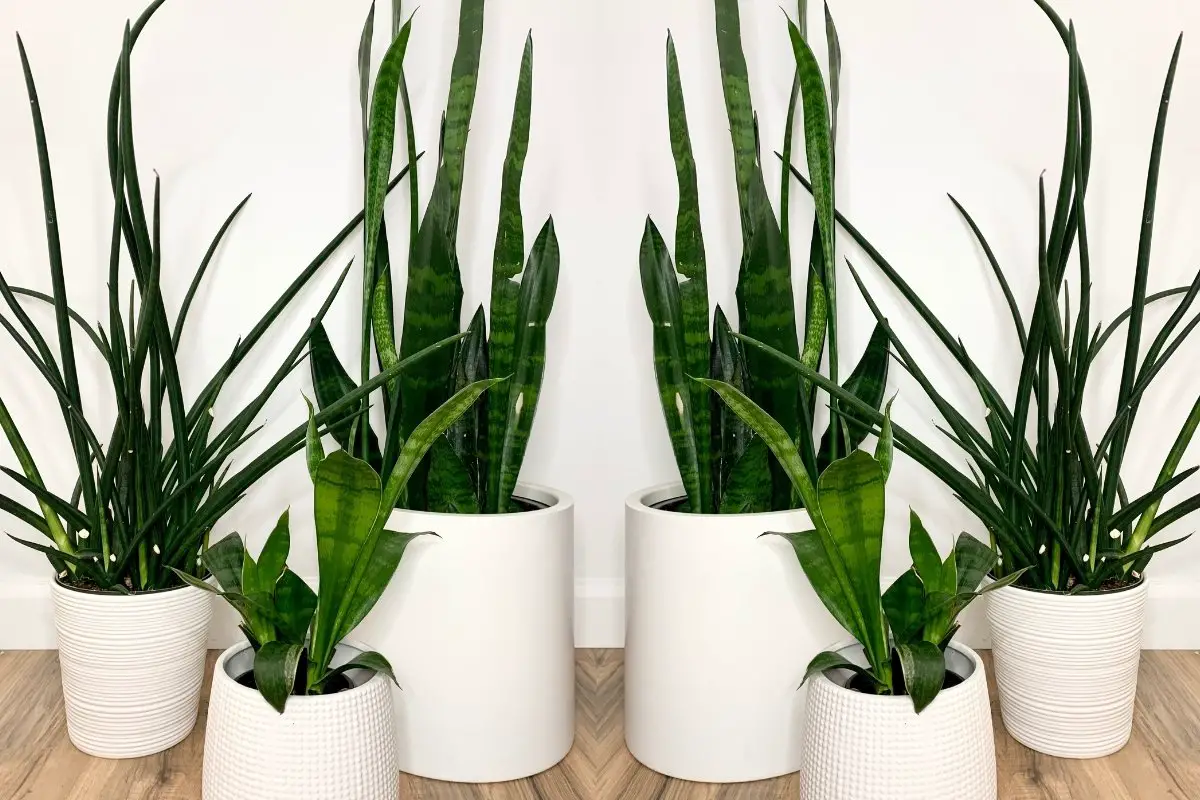Last Updated on September 4, 2022 by Griselda M.
Do snake plants need drainage holes in the pots? This is the question we’re going to be answering today!
Snake plants are members of the family Asparagaceae. This particular plant is native to West Africa. While these plants are thought to be quite safe, they can be mildly toxic and illicit a reaction. They are poisonous to pets and may cause a reaction in some people.
Most people do not know how to take care of snake plants which is why they do not do well in your homes. The major reason why most do poorly is that they do not have all their needs met. One of their needs is drainage holes!
Do Snake Plants Need Drainage Holes?
When you put your snake plant into a pot, the pot must have drainage holes. If the plant has no holes, it’s best to use a drill or sharp object to make at least one drain hole on each side.
This helps the soil properly release the excess water so roots will not be sitting in it all the time. If these holes are already existing, do not worry about putting anything into them.

The water in the pot does not usually drain immediately, even if there are drainage holes. If your snake plant is sitting in water for longer than needed, which can cause root rot. In simple terms, do snake plants need drainage holes? Yes, good drainage is the ticket to healthy growing snake plants.
Can You Bottom Water A Snake Plant – Do Snake Plants Need Drainage Holes?
Can you bottom water a snake plant? Yes, some people use this watering method as an alternative method for watering their plants. Bottom watering is known as an easier watering method where your pot sits on a tray filled with water and absorbs the water through the drainage holes.
When it comes to watering your snake plant, there is no ideal time to water snake plants, but you should be doing so every few weeks, or as little as once a month in the colder months.
How Long Should You Bottom Water Snake Plant?
This depends on the size of your pot and how thirsty the plant is. Before watering, check for dryness of soil using your finger, either by going deep into the soil or poking a few holes in the surface.
Do not bottom water more than once every two weeks, because it might damage the roots or rot them due to bacteria present in wet soils. For any plant, wet soils are a happy environment for bacteria and fungus, which can do damage to your plant’s roots.
Bottom watering is a good way of giving water to your plants without worrying about drowning them or rotting their roots.
Why Are My Snake Plants Rotting?
The most common reason why snake plants do not do well is because of wet soils. If your pot does not have drainage holes, it is bound to hold water; causing your plant’s roots to rot. You can use a sharp object to drill some holes in the pot.
Do you water your snake plant too much? You do not want to water it every day because roots do need time to breathe and snake plant needs less watering than other houseplants because they are succulents.
Other reasons that can cause your snake plant to rot, include:
Watering Them During Winter
Do snake plants need water in winter? Watering snake plants during the cold seasons causes root rot, which is why you should consider only watering once a month in colder months.
Poor Quality Soil
Get some knowledge about what types of soils are good for growing these plants indoors, then experiment with them!
Over-Fertilizing Your Plant Can Cause Chemical Burns On Your Roots
These chemicals can cause damage to roots and leaves which might be noticed as a yellowish color on leaves and dried up spots on the soil. If this is happening, let your soil dry out a bit before watering it again to wash all those chemicals away.
Lack of Sunlight
Try rotating your pot from time to time for an even exposure to prevent “stretching” effects caused by uneven growth from too much heat. Snake plants do best with plenty of light but cannot survive under direct sunlight because the stems will burn along with leaves that are close to the sun.


